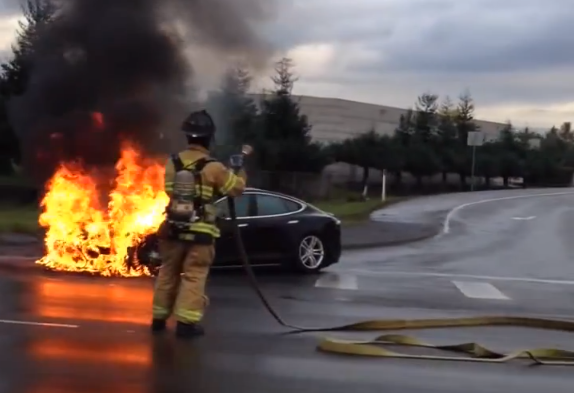Wednesday afternoon, a Tesla Model S burst into flames on Washington State Route 167 outside Seattle. The auto blog Jalopnik quickly posted a video of the luxury electric car engulfed in a ball of fire and smoke. Tesla later noted that the fire hadn’t been spontaneous; the car had been hit by a metal object that damaged the battery pack. The car’s alert system detected a failure and told the driver to pull over, the driver wasn’t injured, and the fire never spread to the passenger compartment. Even so, at the close of the stock market Wednesday, Tesla’s share price had fallen more than 6 percent (It dropped another 5 percent Thursday morning).
The sell-off may have resulted from the video, from a ratings downgrade released the same day by an R.W. Baird stock analyst, or both. Either way, the experience shows how hard it can be for companies to stake their success on radical innovation. Behind investors’ (unfounded) hand-wringing over electrical fires or production hiccups is their unease over the basic fact that nobody has ever built anything like a Tesla before.
That Tesla has come this far — the value of its stock has increased six-fold since the Model S was named Motor Trend’s Car Of The Year — partly reflects the savvy of its co-founder and CEO Elon Musk. But it’s also a classic illustration of the value of federal subsidies, such as the $465 million loan that Tesla received from the U.S. Department of Energy in 2010. When you’re trying something really awesome and new, sometimes you need a little help from taxpayers. Just look up the early history of Google and Apple. Yet Musk, a self-described libertarian, has loudly criticized federal subsidies. I take a closer look at this sort of disconnect, which is pretty common in Silicon Valley circles, in my story in the September/October print issue, now online.
 This story was produced by Mother Jones as part of the Climate Desk collaboration.
This story was produced by Mother Jones as part of the Climate Desk collaboration.



